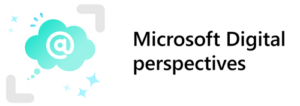 [Editor’s note: This content was written to highlight a particular event or moment in time. Although that moment has passed, we’re republishing it here so you can see what our thinking and experience was like at the time.]
[Editor’s note: This content was written to highlight a particular event or moment in time. Although that moment has passed, we’re republishing it here so you can see what our thinking and experience was like at the time.]
The importance of employee engagement can’t be overstated.
In the wake of the pandemic, the world saw an unprecedented shift in employee behavior and loyalty resulting in a record number of people leaving their jobs. Initially coined as “The Great Resignation” or “Big Quit,” these voluntary resignations were first believed to be a result of companies not meeting tangible employee engagement demands such as wages or working conditions. When leaders took a deeper look, they soon realized that The Great Reshuffle was more about employees rethinking how and if the employee experience aligns with their individual goals and core values.
Now, more than ever, the employee experience is top of mind for business leaders. Employees are one of an organization’s most significant competitive advantages, and today they are cautiously choosing the level of engagement they want to have with their employer.
We are stewards of the employee experience, so we have to obsess over every detail of the online and in-person experience for our employees.
—Nathalie D’Hers, corporate vice president, Microsoft Digital Employee Experience

Like any other company, at Microsoft, we keep learning, adapting, and adopting new ways to approach employee engagement. This includes a laser focus on the tools and technology available to ensure an empowering workplace experience, all while navigating the ongoing challenges of the pandemic and the new normal that hybrid work presents.
Windows 11—with its redesigned experience that puts users at its center—is just one way we’re transforming how we engage with our employees.
Nathalie D’Hers, corporate vice president of the Microsoft Digital Employee Experience team, says it’s about empowering everyone to do their best work. As she puts it, “We are stewards of the employee experience, so we have to obsess over every detail of the online and in-person experience for our employees.”
Obsessing means enabling a secure, collaborative, and personalized work environment both at the individual and collective level. On October 7, 2021, we deployed Windows 11 to 190,000 employee devices worldwide to lead the hybrid work transformation and inspire both employees and customers.

- Microsoft tries Windows 11 on for size and likes the fit
- Unpacking Microsoft’s speedy upgrade to Windows 11
- Windows 11 boosts employee engagement at Microsoft (this blog post)
- Employees are at the heart of Microsoft’s internal Windows 11 upgrade
- Five key learnings from Microsoft’s Windows 11 upgrade
At Microsoft, our Customer Zero approach means testing our own technologies and solutions first so we can learn, validate, and scale in the market. We’re six months into internal adoption, and employees are already seeing the benefits and improvements offered by Windows 11. Early adoption can also come with challenges, so sharing our Customer Zero experiences —the good and the bad—with customers is part of the journey.
Employee experience in action
Windows is and always has been the place for people to “do great things.” From its inception, Windows 11 has been a familiar and trusted companion, and one of the most secure platforms ever with built-in and turned-on security by design. You can read more about how Windows 11 enables security by design here.
When Windows 11 became available to the public, Panos Panay, Microsoft’s chief product officer of Windows and Devices, called it “a place that feels like home” and a technology that “provides a sense of calm and openness.”
Some of our employees couldn’t agree more.
Daniel Hidalgo, product marketing manager for the Microsoft Modern Work team, found himself in a disheartening situation last year when he visited his family in Ecuador and his father fell ill.
To me, beyond being productive, feeling present as a remote worker during this time was extremely important. Being able to take a Teams call from the hospital made all the difference in the world. I felt connected and appreciated.
—Daniel Hidalgo, product marketing manager, Microsoft Modern Work
“It was supposed to be a two-week trip,” he tells me. “Unfortunately, my dad ended up hospitalized and this changed plans for me.”
His new plans included working remotely and during odd hours of the day to help care for his family through his father’s recovery. “Being the oldest of four children, I knew there was no other choice for me but to stay and see it through,” Daniel says.
Daniel was able to navigate his family circumstances and stay securely connected to work while being almost five thousand miles away from his physical office in Seattle. However, being able to work remotely in a secure manner is not all that mattered to him.
“To me, beyond being productive, feeling present as a remote worker during this time was extremely important. Being able to take a Teams call from the hospital made all the difference in the world. I felt connected and appreciated.”
What Daniel is describing is that sense of home.
Learning how employees like Daniel want to interact and engage in the workplace influenced many innovations and features of Windows 11. We take great pride in creating human connectedness across every touchpoint we have with our employees in ways that enable them to have positive experiences at work. We listen to their feedback and take their insights to our product groups, which makes our products better.
Smooth Windows 11 upgrade
Our Employee Experience engineering team loves how easy and fast the deployment of Windows 11 was and how few people it took to roll it out.
“Our support channels were quiet,” recalls Biswa Jaysingh, a principal group program manager whose team’s main goal is to ensure that there is no user disruption during operating system updates. “We didn’t see major issues reported. There were no spikes or trends during deployment.”
Windows 11 implementation is fast and easy to scale.
—Sean MacDonald, partner director of program management, Microsoft Digital Employee Experience
Every successful deployment is a result of early planning, good preparation, and a solid deployment plan. However, one thing that made this latest deployment such a swift operation was that the same trusted practices used to install Windows 10 could also be used to install Windows 11. This ensured a smooth rollout.
Employee and customer experiences will always continue to evolve, and it’s paramount that Windows continues to do the same. Meeting the most critical needs of our global users is at the forefront of everything we do, and the intent of Windows 11 is to fulfill those all-important needs.

- Preparing your teams ahead of time will lead to fast and easy implementation: Windows 11 implementation is fast and easy to scale. But as you take inventory of devices and prepare the infrastructure, you may find that there are teams that need to be excluded from the deployment for specific reasons. Prepare ahead of time for this type of scenario to accommodate those exclusions.
- Build listening systems: Ensure your communications plan includes listening systems where your employees can share their experience and perspectives. While there was not a lot of noise in our support channels, our support teams did see a lot of questions and fan conversations related to new features on social channels like Yammer.
- Be transparent in your deployment path: Some devices may not be immediately eligible or ready for deployment. This can create frustration for employees who are eager to upgrade. Sharing the deployment methodology with your employees, including what they can expect based on their device eligibility, will build trust and foster patience as you navigate toward 100 percent adoption.

- Unpacking Microsoft’s speedy upgrade to Windows 11.
- Microsoft tries Windows 11 on for size and likes the fit.
- Employees are at the heart of Microsoft’s internal Windows 11 upgrade.
- Five key learnings from Microsoft’s Windows 11 upgrade.
- Read a blog post by Panos Panay, Microsoft’s chief product officer in Windows + Devices, introducing Windows 11.
- Learn more about Windows 365 Enterprise.
Tags: digital transformation, Windows








